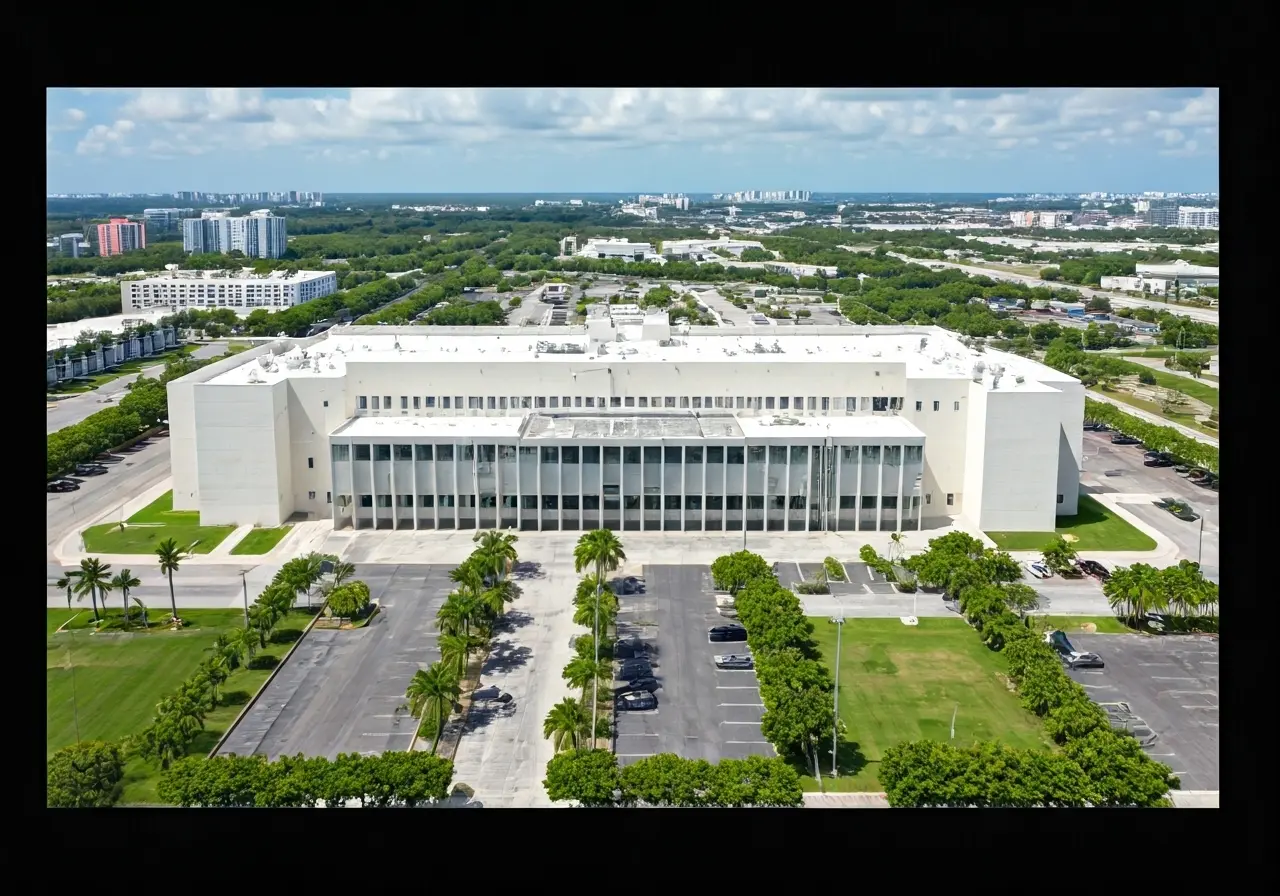10 Common Questions About Miami-Dade County Pretrial Detention Center Answered
Navigating through the intricate system of the Miami-Dade County Pretrial Detention Center can be daunting. Whether you're a concerned family member, a legal professional, or simply curious, answering common questions can provide clarity. This guide unravels key information to help you understand how the system works, what to expect, and more.
1. What Is the Role of the Pretrial Detention Center?
The Miami-Dade County Pretrial Detention Center holds individuals awaiting trial or sentencing. Its primary purpose is to ensure detainees appear for their court dates while maintaining community safety. Beyond just detention, the facility acts as a critical juncture in the justice system where efforts are made not only to preserve order but also to manage the transitional phase of those awaiting trial. Understanding this role clarifies why such centers are crucial in balancing individual rights with societal protection.
A significant part of the pretrial process involves assessments that may dictate whether an individual can be released under certain conditions or must remain in custody. These decisions are largely driven by factors like the severity of the crime and previous offenses. The center’s operations also extend to supporting rehabilitation through educational services aimed at preventing recidivism. In this way, the center strives not merely for containment but for a systemic contribution to justice and reform.
2. How Is Bail Determined?
Bail decisions are made during a court hearing where the judge considers factors such as charges, flight risk, and community ties. This means each case is assessed on an individual basis, allowing for a fair evaluation of circumstances. The ability to post bail often depends on the offense's nature and the defendant's personal history, including prior convictions and perceived threat to public safety.
This process not only serves as a financial guarantee that the defendant will appear in court but also as a mechanism that assesses the risk involved in releasing someone into the community. It's a balancing act of ensuring public safety while respecting the rights of the individual, and thus, each case presents unique challenges and insights. To understand more about how bail amounts are set and changed, reviewing past cases in similar jurisdictions can offer additional context.
3. Who Manages the Facility?
The facility is managed by the Miami-Dade Corrections and Rehabilitation Department, which oversees daily operations and ensures the institution's standards are met. This department plays a crucial role in maintaining the quality of life within the facility, ensuring it operates smoothly and efficiently. Their responsibilities include inmate management, rehabilitation programs, and adherence to legal standards.
The dedicated professionals who work there are trained to handle a variety of situations, from routine checks to emergency responses. They foster an environment that prioritizes safety, security, and the enforcement of rules that guide daily life in the center. The leadership's approach integrates care and control, aiming for the rehabilitation of detainees while maintaining strict operational standards.
4. What Are Visitation Rules?
Visitation is permitted under strict guidelines, including scheduled times and prior approval for visitors to ensure security and order. It's essential for families to understand these rules as they play a significant role in maintaining links between detainees and their loved ones.
These regulations often require visitors to undergo checks and adhere to specific protocols that safeguard the well-being of everyone involved. Facilities like Miami-Dade’s ensure that visits are conducted in a manner that respects privacy without compromising safety. It's important to check any recent updates or changes to these policies, especially during periods of heightened security or health concerns.
5. What Programs Are Available for Inmates?
Inmates have access to various educational and rehabilitative programs aimed at reducing recidivism, such as substance abuse counseling and vocational training. These programs are designed to provide critical life skills and promote positive behavior change.
Participation in such programs not only aids in personal development but also enhances prospects for successful reintegration into society post-release. By focusing on education and skill-building, the center supports the broader goal of reducing future offenses and aiding inmates in becoming productive members of society. Programs like these reflect an understanding that long-term solutions require addressing underlying issues beyond just punitive measures.
6. How Can Legal Representatives Connect with Detainees?
Legal representatives can schedule confidential meetings with detainees, ensuring they have the necessary legal support and representation. These meetings are typically arranged through prior appointments, respecting both legal protocols and the security needs of the center.
These connections are vital for building a robust defense and ensuring detainees are well-informed of their legal standing. Effective communication with legal counsel helps preserve the rights of the detainees and provides a channel through which they can better understand the proceedings affecting their lives.
7. What Are the Health Care Provisions?
Medical care is provided to all detainees, including routine check-ups and emergency treatment, ensuring health standards are upheld. The center employs healthcare professionals who monitor the health of inmates and address any medical needs promptly.
Ensuring adequate healthcare is an integral part of maintaining the welfare of detainees, who might otherwise be vulnerable to the spread of infections or neglect of chronic conditions. Facilities like Miami-Dade’s commitment to healthcare reflect broader efforts to humanize correctional environments while meeting mandated legal requirements.
8. How Is Security Maintained?
Security is maintained through stringent measures, including surveillance, regular patrols, and controlled access to the facility. These strategies are crucial in preventing incidents that could compromise the safety of inmates and staff alike.
Advanced security systems coordinate with human vigilance to form a formidable line of defense against potential threats. The use of technology alongside traditional methods ensures a layered, comprehensive approach to security management that adapts to evolving needs and risks.
9. What Should Families Know About Phone Calls?
Detainees can make calls, but these are monitored for safety. Families should understand the rules governing call times and financial charges. Knowing these details helps manage expectations and logistical planning from both sides.
Communication rules are instituted to balance safety with the benefits of maintaining contact with loved ones. As communication can often be a lifeline for detainees, understanding how to navigate these protocols without breach is beneficial for all parties.
10. How Can One Request Inmate Information?
Inmate information can be requested via the facility's official channels, ensuring privacy and compliance with legal standards. These inquiries are subject to verification processes which protect individual privacy while allowing access to necessary information.
Following these procedures helps maintain the integrity and confidentiality of records, fostering trust in the system. It ensures that while public interest might require certain disclosures, personal rights and legal guidelines are given due importance.

